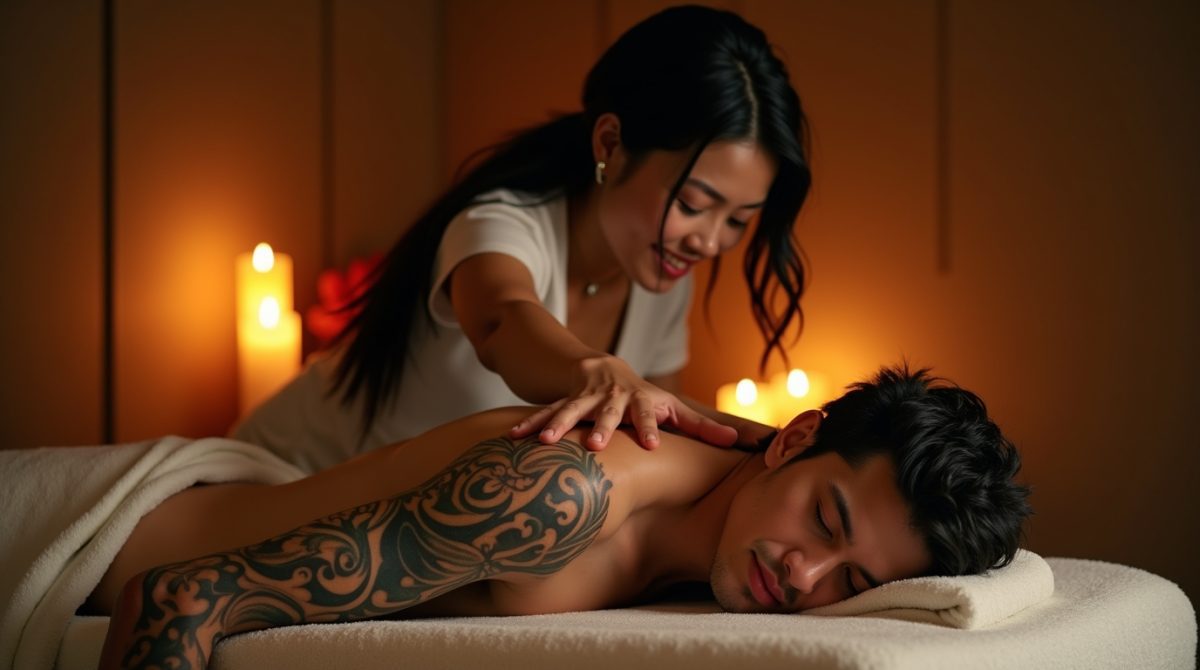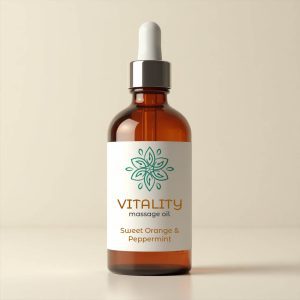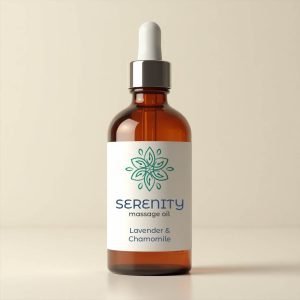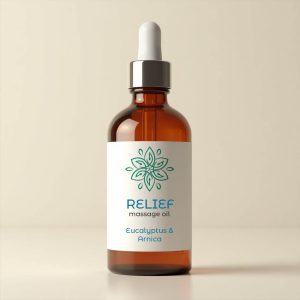A spa massage isn’t just a luxurious treat—it’s a powerful way to relieve stress, ease muscle tension, and improve overall well-being. Whether you’re looking to relax after a long week, recover from intense workouts, or simply indulge in some well-deserved self-care, a professional massage can work wonders for both your body and mind.
But with so many different types of massages available at spas, how do you know which one is right for you? From gentle, soothing strokes that melt away stress to deep pressure techniques that target chronic pain, each type of massage offers unique benefits tailored to different needs. Some focus on relaxation and mental clarity, while others are designed to improve circulation, relieve muscle soreness, or even boost flexibility.
In this guide, we’ll take you through the 10 best types of massages you can get at a spa, explaining what makes each one special and who they’re best suited for. Whether you’re a first-time spa-goer or a massage enthusiast looking to try something new, this list will help you find the perfect massage experience for your needs.
Let’s dive in and explore the world of spa massages!
1. Swedish Massage (Best for Relaxation)
If you’re looking for the ultimate relaxation experience, a Swedish massage is the perfect choice. It’s one of the most popular types of massages offered at spas worldwide and is ideal for those who want to unwind without intense pressure or deep muscle work.
What Is a Swedish Massage?
A Swedish massage uses long, flowing strokes, kneading, and gentle circular movements to help relax the muscles and improve circulation. The therapist applies light to medium pressure, ensuring a soothing and rhythmic experience that melts away stress. Unlike deep tissue or sports massages, which focus on targeting knots and tension, Swedish massage is designed to promote overall relaxation and well-being.
Key Techniques Used:
- Effleurage: Long, gliding strokes to warm up the muscles and improve blood flow.
- Petrissage: Gentle kneading and rolling of muscles to relieve tension.
- Friction: Circular movements to stimulate circulation and ease stiffness.
- Tapotement: Light tapping or percussion techniques to wake up the muscles and improve energy flow.
- Vibration/Shaking: Gentle shaking movements to relax the muscles.
Benefits of a Swedish Massage
✔️ Relieves Stress: The slow, rhythmic movements activate the body’s relaxation response, helping to reduce anxiety and promote calmness.
✔️ Improves Circulation: Enhances blood flow, helping to deliver oxygen and nutrients to the muscles.
✔️ Eases Muscle Tension: Perfect for people who experience general tightness but don’t need deep tissue pressure.
✔️ Boosts Mood: The gentle touch and essential oils used in some sessions can help improve mood and mental clarity.
✔️ Enhances Sleep Quality: By reducing stress and tension, Swedish massage can lead to better sleep.
Who Should Get a Swedish Massage?
- People looking for a gentle, relaxing massage without deep pressure.
- Those dealing with stress, anxiety, or sleep issues.
- Beginners who are new to spa massages and want a calming experience.
- Individuals with mild muscle tension but no severe pain or injuries.
What to Expect During a Swedish Massage
- The session typically lasts 60 to 90 minutes.
- You’ll lie on a massage table with a towel or sheet covering your body (except for the area being massaged).
- The therapist will use oil or lotion to help their hands glide smoothly over the skin.
- Pressure can be adjusted based on your preference—be sure to communicate with your therapist.
Swedish massage is the go-to option for anyone seeking pure relaxation. Whether you need a stress-relief session after a long week or just want to pamper yourself, this massage is a great choice for a calming, rejuvenating spa experience.
2. Deep Tissue Massage (Best for Muscle Tension & Chronic Pain)
If you’re dealing with chronic muscle pain, stiffness, or deep-seated tension, a deep tissue massage is one of the best treatments a spa can offer. Unlike the gentle strokes of a Swedish massage, deep tissue massage targets the deeper layers of muscle and connective tissue, using firm pressure and slow strokes to break up knots and relieve tightness.
What Is a Deep Tissue Massage?
A deep tissue massage focuses on releasing chronic tension by applying sustained pressure with slow, deliberate strokes. The therapist uses their fingers, thumbs, knuckles, and even elbows to reach deeper layers of muscle and fascia (the connective tissue surrounding muscles).
This type of massage is ideal for people with:
✅ Chronic pain (such as lower back pain or neck and shoulder stiffness).
✅ Muscle knots and adhesions that restrict movement.
✅ Sports injuries or repetitive strain injuries.
✅ Postural issues caused by prolonged sitting or physical activity.
Key Techniques Used in Deep Tissue Massage
Deep tissue massage incorporates many of the same techniques as Swedish massage but with greater pressure and a slower pace to penetrate deep layers of muscle:
- Stripping: Deep gliding strokes that follow the length of muscle fibers.
- Friction: Slow, deep circular movements that help break up muscle adhesions.
- Compression: Sustained pressure on tight areas to encourage muscle release.
- Trigger Point Therapy: Holding pressure on specific pain points to relieve tension.
Benefits of a Deep Tissue Massage
✔️ Reduces Chronic Muscle Pain – Eases persistent tightness and soreness.
✔️ Breaks Down Scar Tissue – Helps improve mobility in areas affected by old injuries.
✔️ Improves Posture and Flexibility – Releases tension that can cause misalignment.
✔️ Enhances Athletic Recovery – Speeds up healing after intense physical activity.
✔️ Lowers Stress and Blood Pressure – Studies suggest that deep tissue massage can help reduce cortisol (the stress hormone).
Who Should Get a Deep Tissue Massage?
- People with chronic pain conditions such as fibromyalgia or lower back pain.
- Athletes and individuals recovering from sports injuries.
- Those who prefer a stronger, more intense massage experience.
- Anyone with postural imbalances or mobility issues due to muscle tightness.
💡 Not Recommended For:
- People who prefer a gentle, relaxing massage (opt for Swedish or aromatherapy massage instead).
- Those with recent injuries, inflammation, or certain medical conditions (consult a doctor first).
- Individuals sensitive to deep pressure or prone to bruising.
What to Expect During a Deep Tissue Massage
- Duration: Typically 60 to 90 minutes.
- Intensity: Expect firm, sometimes intense pressure—but it shouldn’t be painful.
- Post-Massage Soreness: It’s common to feel mild soreness the next day, similar to post-workout aches.
- Hydration Is Key: Drink plenty of water afterward to help flush out toxins released from deep muscle work.
A deep tissue massage is one of the best ways to relieve muscle tension, improve mobility, and promote deep healing. While it’s not the most relaxing type of massage, it’s incredibly effective for those who need serious tension relief.
3. Hot Stone Massage (Best for Stress Relief & Circulation)
If you want to experience deep relaxation and warmth melting away your stress, a hot stone massage is the perfect choice. This luxurious treatment combines traditional massage techniques with smooth, heated stones to enhance relaxation, improve circulation, and soothe muscle tension.
What Is a Hot Stone Massage?
A hot stone massage involves the use of heated basalt stones (volcanic rocks that retain heat well) placed on key points of the body, typically along the spine, shoulders, and lower back. The therapist also uses these warm stones to perform gliding massage strokes, allowing the heat to penetrate deep into the muscles.
The warmth from the stones helps to increase blood circulation, ease muscle stiffness, and promote a deep sense of calm—making it one of the most relaxing spa treatments available.
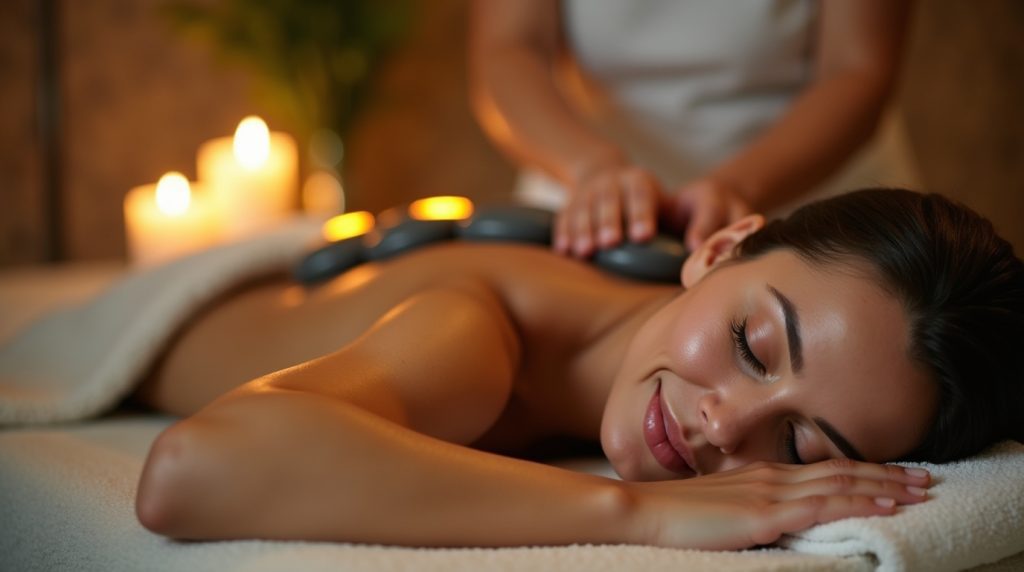
Key Techniques Used in Hot Stone Massage
- Stone Placement: Heated stones are placed on specific energy points along the back, hands, or feet to enhance relaxation.
- Gliding Massage Strokes: The therapist uses the warm stones to massage the muscles, allowing the heat to sink deeper into the tissues.
- Combination with Swedish or Deep Tissue Techniques: Some therapists integrate Swedish massage strokes for relaxation or deep tissue work for tension relief.
Benefits of a Hot Stone Massage
✔️ Deep Relaxation: The heat calms the nervous system and promotes a sense of tranquility.
✔️ Eases Muscle Tension: The warmth penetrates deep into the muscles, reducing tightness and stiffness.
✔️ Boosts Circulation: The heat encourages better blood flow and oxygen delivery to tissues.
✔️ Relieves Stress & Anxiety: The soothing effects help lower stress hormone levels.
✔️ Improves Sleep Quality: Many people experience deeper, more restful sleep after a hot stone massage.
Who Should Get a Hot Stone Massage?
- Anyone looking for deep relaxation and stress relief.
- People with mild muscle tension who want a gentle way to ease tightness.
- Those who enjoy warmth-based therapy for soothing aches and pains.
💡 Not Recommended For:
- Individuals with heat sensitivity or skin conditions.
- Those with circulatory issues, diabetes, or heart conditions (consult a doctor first).
- Pregnant women (some spas offer special prenatal hot stone massages, but check with your provider).
What to Expect During a Hot Stone Massage
- Duration: Typically 60 to 90 minutes.
- Stone Temperature: The stones are usually heated to 50-60°C (120-140°F)—warm, but never too hot.
- Relaxing Sensations: The heat spreads slowly through the muscles, helping you unwind completely.
- Aftercare: Drink plenty of water post-massage to help flush out toxins and stay hydrated.
A hot stone massage is one of the most deeply relaxing spa treatments you can experience. The combination of soothing heat and expert massage strokes makes it a perfect choice for those looking to de-stress, improve circulation, and melt away muscle tension.
4. Thai Massage (Best for Flexibility & Energy Boost)
If you’re looking for a massage that goes beyond relaxation and into full-body stretching, mobility, and energy balancing, then a Thai massage is an excellent choice. Unlike traditional spa massages that rely on oils and deep pressure, Thai massage is an active experience that involves assisted stretching, acupressure, and rhythmic compressions to boost flexibility and restore energy flow.
What Is a Thai Massage?
Originating from Thailand over 2,500 years ago, Thai massage is a unique form of bodywork that combines yoga-like stretches, acupressure, and deep massage techniques. Unlike other massages where you lie passively on a table, Thai massage is performed on a padded mat, and the therapist moves and stretches your body into various positions, almost like assisted yoga.
Instead of using oil, the therapist applies rhythmic pressing, rocking, and deep stretches to stimulate circulation and release muscle tension. The session is designed to enhance energy flow throughout the body, following the principles of traditional Thai medicine.
Key Techniques Used in Thai Massage
- Stretching: The therapist gently stretches your body to improve flexibility and mobility.
- Acupressure: Pressing on specific energy lines (Sen lines) to release tension and improve circulation.
- Joint Mobilization: Rotating and moving joints to relieve stiffness and increase range of motion.
- Compression: Applying rhythmic pressure using hands, elbows, knees, and even feet.
Benefits of a Thai Massage
✔️ Boosts Flexibility and Mobility: The deep stretching helps improve joint and muscle flexibility.
✔️ Relieves Muscle Tension: Targeted pressure helps reduce knots and stiffness.
✔️ Energizes the Body: Unlike other massages that promote deep relaxation, Thai massage leaves you feeling refreshed and recharged.
✔️ Improves Posture and Alignment: The combination of stretches and pressure realigns the body naturally.
✔️ Enhances Circulation and Detoxification: Stimulates the lymphatic system, helping the body eliminate toxins.
Who Should Get a Thai Massage?
- People who want a dynamic, active massage rather than a traditional oil-based one.
- Individuals with tight muscles or reduced flexibility who want a deep stretch.
- Athletes and yogis looking to enhance mobility and recover from training.
- Those feeling sluggish or low on energy, as Thai massage helps restore vitality.
What to Expect During a Thai Massage
- Duration: Sessions typically last 60 to 90 minutes, though some can go up to two hours.
- No Oils or Lotions: You’ll remain fully clothed in loose, comfortable clothing.
- Mat Instead of a Table: The massage is performed on a padded floor mat rather than a table.
- Active Participation: Expect to be moved into various stretches and positions—this isn’t a passive massage.
- Aftercare: Drink water and allow your body to rest, as the deep stretching can leave you feeling slightly sore but incredibly rejuvenated.
Thai massage is an incredible blend of massage therapy, yoga, and energy work that leaves you feeling more flexible, refreshed, and recharged. If you love the idea of a massage that incorporates movement and stretching, this ancient technique is definitely worth trying.
5. Aromatherapy Massage (Best for Mind & Body Relaxation)
If you’re looking for a massage that not only soothes your muscles but also calms your mind, an aromatherapy massage is the perfect choice. This treatment combines the benefits of gentle massage techniques with the healing properties of essential oils, creating a deeply relaxing and holistic experience that enhances both physical and emotional well-being.
What Is an Aromatherapy Massage?
An aromatherapy massage is a variation of a traditional massage that incorporates essential oils derived from plants, flowers, and herbs. These oils are selected based on their therapeutic properties and can help with stress relief, mood enhancement, pain reduction, and improved sleep.
During the massage, the therapist blends essential oils with a carrier oil and applies them using gentle, flowing strokes similar to a Swedish massage. The scent of the oils is also inhaled during the session, allowing the therapeutic effects to work through both touch and aroma.
Key Techniques Used in Aromatherapy Massage
- Effleurage: Light, flowing strokes to spread the oil and promote relaxation.
- Petrissage: Gentle kneading to ease muscle tension.
- Friction: Circular motions to stimulate circulation.
- Breathing Techniques: The therapist may guide you to take deep breaths to maximize the effects of the essential oils.
Popular Essential Oils Used in Aromatherapy Massage
- Lavender: Promotes relaxation, reduces anxiety, and improves sleep.
- Eucalyptus: Clears the sinuses, boosts immunity, and relieves muscle pain.
- Peppermint: Energizing and great for relieving headaches and muscle soreness.
- Chamomile: Soothes stress and tension, promoting a sense of calm.
- Rosemary: Stimulates circulation and helps with mental clarity.
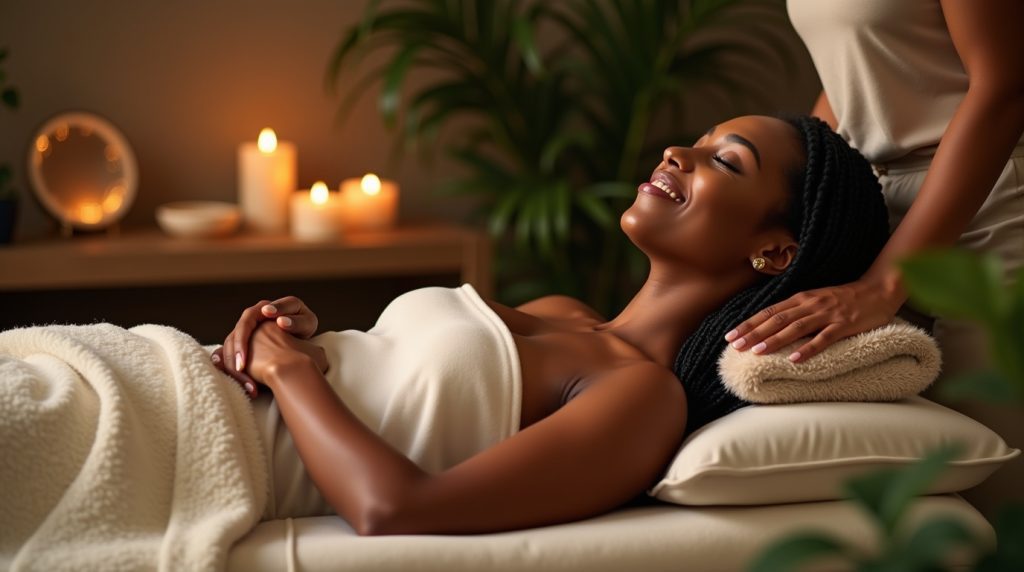
Benefits of an Aromatherapy Massage
✔️ Deep Relaxation: The combination of gentle strokes and calming scents soothes the nervous system.
✔️ Reduces Stress and Anxiety: Essential oils have natural calming effects that lower stress hormones.
✔️ Boosts Mood and Mental Clarity: Certain scents, like citrus or rosemary, help lift your mood and improve focus.
✔️ Eases Muscle Tension and Pain: Oils like eucalyptus and peppermint provide natural pain relief.
✔️ Improves Sleep Quality: Lavender and chamomile help reduce insomnia and promote deeper sleep.
Who Should Get an Aromatherapy Massage?
- People dealing with high stress, anxiety, or mood imbalances.
- Those who want a gentle, relaxing massage rather than a deep tissue experience.
- Anyone experiencing insomnia or poor sleep quality.
- Individuals looking for a holistic wellness treatment that benefits both the body and mind.
What to Expect During an Aromatherapy Massage
- Duration: Typically 60 to 90 minutes.
- Oil Selection: The therapist may ask about your preferences or wellness goals before choosing the essential oils.
- Scented Ambiance: The room is often infused with essential oils through diffusers or candles.
- Light to Medium Pressure: The massage is usually soothing rather than intense.
- Aftercare: Drink plenty of water and enjoy the lingering scent of the oils, which continue to work for hours after the massage.
An aromatherapy massage is a sensory experience that nurtures both the body and mind, making it one of the most soothing treatments available at a spa. If you want to melt away stress, boost your mood, or improve sleep naturally, this is the perfect massage for you.
6. Reflexology (Best for Foot & Hand Relaxation)
If you’re looking for a massage that targets pressure points to promote full-body wellness, reflexology is an excellent choice. This ancient practice focuses on the feet, hands, and ears, applying pressure to specific reflex points that correspond to different organs and systems in the body. Reflexology isn’t just a foot massage—it’s a holistic therapy designed to stimulate healing, reduce stress, and restore balance.
What Is Reflexology?
Reflexology is based on the idea that certain areas of the feet, hands, and ears are directly linked to other parts of the body through energy pathways. By applying pressure to these reflex points, therapists aim to improve circulation, relieve tension, and promote natural healing.
A reflexology session mainly focuses on the feet, where most of the reflex points are located, but it may also include work on the hands and ears for a more complete experience.
Key Techniques Used in Reflexology
- Thumb Walking: The therapist uses their thumbs to apply gentle, repetitive pressure along specific reflex zones.
- Pinpoint Pressure: Firm pressure is applied to targeted reflex points that correspond to organs and body systems.
- Kneading & Stretching: Gentle kneading and stretching techniques help relax the feet and improve circulation.
Benefits of Reflexology
✔️ Relieves Stress & Anxiety: Stimulating reflex points helps relax the nervous system and lower stress levels.
✔️ Boosts Circulation: Improves blood flow, which can enhance healing and energy levels.
✔️ Supports Detoxification: Helps stimulate the lymphatic system, aiding in toxin removal.
✔️ Reduces Pain & Tension: Can help with conditions like headaches, migraines, and chronic pain.
✔️ Promotes Overall Wellness: Reflexology is believed to balance the body’s energy and support natural healing processes.
Who Should Get Reflexology?
- Anyone who spends long hours on their feet and wants relief from foot fatigue.
- People with stress, anxiety, or tension headaches looking for a natural remedy.
- Individuals who prefer a targeted, pressure-based massage rather than a full-body treatment.
- Those interested in alternative healing practices and holistic wellness.
What to Expect During a Reflexology Session
- Duration: Typically 30 to 60 minutes, though some sessions may last longer.
- Focus on the Feet: Most of the treatment is done on the soles, heels, toes, and sides of the feet.
- Mild to Firm Pressure: Reflexology is not meant to be painful, but some areas may feel sensitive if they correspond to problem areas in the body.
- Relaxing Environment: The therapist may use aromatherapy, warm towels, or soft music to enhance relaxation.
- Post-Massage Effects: Many people feel lighter, more energized, and deeply relaxed after a session.
Reflexology is more than just a foot massage—it’s a therapeutic practice that promotes balance, relaxation, and overall well-being. If you’re looking for a gentle yet effective way to relieve stress and improve circulation, this ancient healing technique is definitely worth trying.
7. Shiatsu Massage (Best for Releasing Energy Blockages)
If you’re looking for a massage that combines pressure-point therapy, deep relaxation, and energy balancing, Shiatsu massage is a great choice. Originating from Japan, this technique is based on traditional Chinese medicine and focuses on restoring the body’s natural energy flow (Qi or Chi) through acupressure and rhythmic movements.
What Is a Shiatsu Massage?
Shiatsu means “finger pressure” in Japanese, and this therapy involves the application of deep, focused pressure using the therapist’s fingers, palms, elbows, and even knees. Unlike other massages that use oils, Shiatsu is typically performed with the recipient fully clothed on a mat or low massage table.
The massage targets specific meridian points (similar to acupuncture) to relieve tension, improve circulation, and promote relaxation. It’s a great option for those who want a massage that blends muscle relief with holistic healing.
Key Techniques Used in Shiatsu Massage
- Finger & Palm Pressure: Rhythmic pressing on acupressure points to balance energy flow.
- Stretching & Joint Mobilization: Gentle stretching to improve flexibility and release stiffness.
- Kneading & Rolling: Similar to deep tissue techniques but applied along energy pathways.
- Rocking Motions: Helps relax muscles and restore energy balance.
Benefits of a Shiatsu Massage
✔️ Releases Energy Blockages: Helps restore balance by stimulating the body’s meridian points.
✔️ Reduces Stress & Anxiety: Encourages deep relaxation and mental clarity.
✔️ Relieves Muscle Tension & Joint Stiffness: Great for reducing aches, pain, and stiffness in the body.
✔️ Improves Circulation & Digestion: Stimulates internal systems, supporting overall wellness.
✔️ Enhances Sleep Quality: Many people report better sleep after a Shiatsu session.
Who Should Get a Shiatsu Massage?
- Anyone feeling fatigued, stressed, or mentally drained.
- People dealing with chronic muscle tightness or joint stiffness.
- Those who prefer a clothed massage without oils or lotions.
- Individuals interested in energy work and holistic healing.
What to Expect During a Shiatsu Massage
- Duration: Typically 60 to 90 minutes.
- No Oils or Lotions: The massage is performed with the recipient fully clothed.
- Pressure-Based Therapy: Expect firm but relaxing pressure on various acupressure points.
- Stretching & Movement: You may be gently moved into different postures to enhance flexibility.
- Aftereffects: Some people feel deeply relaxed, while others experience an energizing, refreshed sensation.
Shiatsu massage is perfect for those looking to relieve tension, restore energy balance, and experience holistic healing. Whether you need a reset from daily stress or relief from muscle stiffness, this technique offers both physical and energetic benefits.
8. Lymphatic Drainage Massage (Best for Detox & Reducing Swelling)
If you’re looking for a gentle yet highly effective massage that helps flush out toxins, reduce swelling, and boost immunity, a lymphatic drainage massage is an excellent choice. This specialized technique is designed to stimulate the lymphatic system, which plays a key role in eliminating waste and excess fluids from the body.
What Is a Lymphatic Drainage Massage?
A lymphatic drainage massage uses light, rhythmic strokes and gentle pumping movements to encourage the natural flow of lymph—a clear fluid that carries waste, toxins, and immune cells throughout the body. Unlike deep tissue or Swedish massage, this technique is extremely gentle, focusing on stimulating the lymph nodes and pathways rather than working deep into the muscles.
This massage is particularly beneficial for individuals experiencing water retention, poor circulation, or weakened immunity. It is often recommended after surgery, illness, or periods of inactivity to help the body recover more efficiently.
Key Techniques Used in Lymphatic Drainage Massage
- Light, Gentle Strokes: Slow, rhythmic movements that encourage lymph flow without applying deep pressure.
- Pumping Motions: Small, repetitive movements that activate lymph nodes.
- Circular & Stretching Movements: Help move fluid from swollen areas toward the lymphatic system for elimination.
Benefits of a Lymphatic Drainage Massage
✔️ Reduces Swelling & Water Retention: Helps flush out excess fluids, especially after surgery or long periods of immobility.
✔️ Boosts the Immune System: Supports the body’s natural detoxification process.
✔️ Speeds Up Recovery: Often recommended post-surgery to help reduce inflammation and improve healing.
✔️ Improves Skin Health: Can help with acne, puffiness, and a clearer complexion by removing toxins.
✔️ Promotes Deep Relaxation: The gentle touch calms the nervous system, reducing stress and anxiety.
Who Should Get a Lymphatic Drainage Massage?
- People dealing with water retention, bloating, or swollen limbs.
- Individuals recovering from surgery, injury, or illness.
- Those looking to boost their immune system and detox naturally.
- Anyone with skin concerns who wants to improve circulation for a healthier glow.
💡 Not Recommended For:
- Individuals with heart conditions, blood clots, or active infections (always consult a doctor first).
- Those looking for a deep-pressure massage (this technique is light and gentle).
What to Expect During a Lymphatic Drainage Massage
- Duration: Typically 45 to 90 minutes.
- Gentle, Light Pressure: Unlike traditional massages, this technique does not involve deep kneading or muscle manipulation.
- Focused on Key Areas: The therapist will concentrate on lymph nodes in the neck, armpits, abdomen, and groin.
- Aftereffects: Many people feel lighter, less bloated, and deeply relaxed after a session. Some may experience increased urination as the body eliminates toxins.
Lymphatic drainage massage is an excellent detox therapy that helps the body eliminate excess fluids, reduce swelling, and enhance overall well-being. If you’re looking for a gentle, soothing treatment with powerful health benefits, this is a great option to consider.
9. Prenatal Massage (Best for Pregnancy Discomfort Relief)
Pregnancy is a beautiful journey, but it also comes with its fair share of discomforts—back pain, swollen feet, muscle tension, and fatigue. A prenatal massage is a specially designed treatment that helps expectant mothers relieve stress, reduce physical discomfort, and promote overall well-being during pregnancy.
What Is a Prenatal Massage?
Prenatal massage is a gentle, therapeutic massage tailored specifically for pregnant women. It focuses on reducing muscle tension, improving circulation, and relieving stress, all while ensuring the safety and comfort of both the mother and baby.
Unlike traditional massages, special positioning techniques and cushions are used to provide support and avoid unnecessary pressure on the belly. Most prenatal massages are performed with the mother lying on her side or in a semi-reclined position.
Key Techniques Used in Prenatal Massage
- Gentle Effleurage: Light, soothing strokes to promote relaxation and improve circulation.
- Lower Back & Hip Focus: Special attention to areas that bear extra weight during pregnancy.
- Leg & Foot Massage: Helps relieve swelling and reduce fluid retention.
- Shoulder & Neck Release: Reduces tension caused by postural changes and stress.
Benefits of a Prenatal Massage
✔️ Relieves Back & Hip Pain: Helps alleviate discomfort caused by the added weight and posture shifts.
✔️ Reduces Swelling (Edema): Improves lymphatic drainage, reducing water retention in the legs and feet.
✔️ Eases Stress & Anxiety: The calming effects help lower cortisol (stress hormone) levels.
✔️ Improves Circulation: Enhances blood flow to both the mother and baby, promoting oxygen delivery.
✔️ Helps with Sleep Issues: Reduces restlessness and improves sleep quality during pregnancy.
Who Should Get a Prenatal Massage?
- Expectant mothers in their second or third trimester who need relief from pregnancy discomforts.
- Pregnant women experiencing back pain, swelling, or fatigue.
- Those struggling with stress, anxiety, or trouble sleeping.
💡 Not Recommended For:
- Women in their first trimester (massage is generally avoided during early pregnancy due to the risk of miscarriage).
- Those with high-risk pregnancies, preeclampsia, or blood clotting disorders (consult a doctor first).
What to Expect During a Prenatal Massage
- Duration: Typically 60 minutes (shorter sessions available for extra comfort).
- Safe Positioning: You’ll be positioned on your side with pillows or a special prenatal massage table.
- Gentle Pressure: The therapist will use light to medium pressure, avoiding deep pressure on the lower back and legs.
- Soothing Atmosphere: Expect a calming, supportive environment designed for relaxation and comfort.
- Aftereffects: Many women feel lighter, more energized, and less tense after a session.
A prenatal massage is a safe and effective way for expectant mothers to ease pregnancy-related discomforts while enjoying a relaxing, nurturing experience. If you’re pregnant and looking for stress relief, pain reduction, or better sleep, this specialized massage can be a wonderful addition to your wellness routine.
Disclaimer: Please check with your doctor before deciding to go for a Pre-Natal massage
10. Sports Massage (Best for Athletes & Active Individuals)
For those who lead an active lifestyle, a sports massage is one of the best ways to enhance performance, prevent injuries, and speed up muscle recovery. Whether you’re a professional athlete, a weekend warrior, or someone who engages in regular physical activity, this type of massage is designed to keep your body in peak condition.
What Is a Sports Massage?
A sports massage is a targeted, deep-pressure massage that focuses on muscle recovery, flexibility, and injury prevention. Unlike relaxation massages, this technique is designed to address specific muscle groups that are overused, tight, or fatigued due to exercise or repetitive movements.
The massage can be customized based on an athlete’s needs—whether it’s a pre-event massage to warm up the muscles, a post-event massage for recovery, or regular maintenance to prevent injuries.
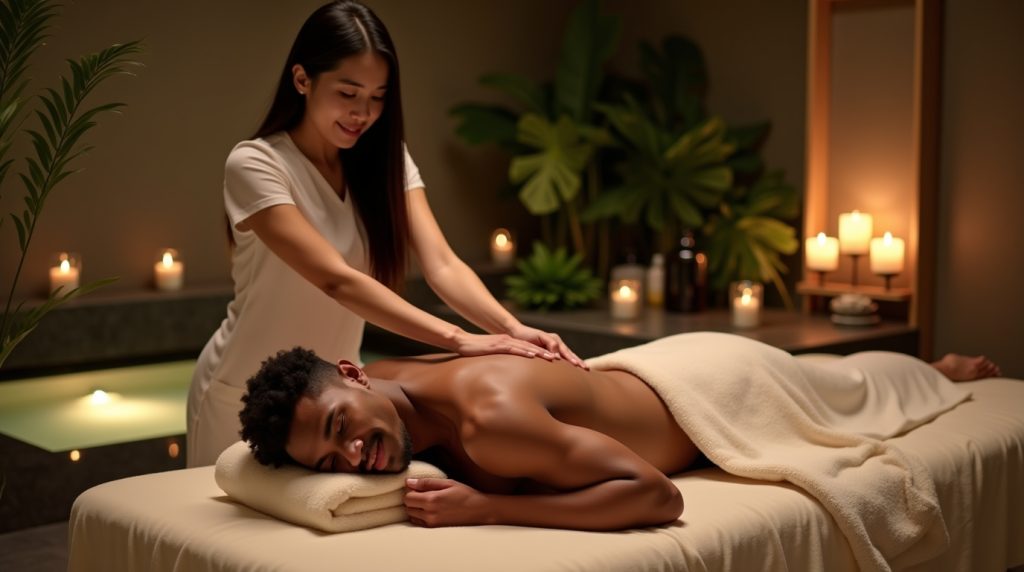
Key Techniques Used in Sports Massage
- Deep Tissue Manipulation: Targets tight muscles and breaks down adhesions (knots).
- Stretching & Joint Mobilization: Enhances flexibility and range of motion.
- Compression Techniques: Improves circulation and muscle relaxation.
- Trigger Point Therapy: Releases painful knots that cause discomfort or limit movement.
Benefits of a Sports Massage
✔️ Enhances Athletic Performance: Helps improve muscle function, flexibility, and endurance.
✔️ Speeds Up Recovery: Reduces muscle soreness and accelerates healing after intense workouts.
✔️ Prevents Injuries: Regular sports massages can help prevent muscle strains and overuse injuries.
✔️ Reduces Muscle Pain & Inflammation: Promotes better blood flow and helps with post-exercise recovery.
✔️ Improves Mobility & Flexibility: Essential for athletes who rely on a full range of motion.
Who Should Get a Sports Massage?
- Athletes of all levels—whether professional, amateur, or fitness enthusiasts.
- People recovering from sports-related injuries or muscle overuse.
- Those who experience chronic muscle tightness due to training.
- Individuals looking to increase flexibility and prevent stiffness.
💡 Not Recommended For:
- Those looking for a gentle, relaxing massage (opt for Swedish or aromatherapy massage instead).
- Individuals with recent injuries, fractures, or inflammation (consult a doctor first).
What to Expect During a Sports Massage
- Duration: Typically 30 to 90 minutes, depending on whether it’s a full-body or targeted session.
- Targeted Muscle Work: The therapist will focus on specific areas that need attention.
- Intense Pressure: Expect firm strokes and deep pressure—but it should be manageable, not painful.
- Stretching & Movement: May include assisted stretches to improve flexibility.
- Post-Massage Effects: Some soreness is normal, but you should feel looser and more mobile after a day or two.
Final Thoughts
A sports massage is an essential tool for athletes and active individuals who want to stay injury-free, recover faster, and enhance their physical performance. Whether you need pre-workout prep, post-exercise recovery, or long-term muscle maintenance, this type of massage is designed to keep your body in top shape.
Now that we’ve covered the 10 best types of massages you can get at a spa, the next step is choosing the one that suits your needs best. Whether you want deep relaxation, pain relief, flexibility enhancement, or sports recovery, there’s a massage designed just for you.
Choosing the Perfect Spa Massage for You
With so many incredible massage options available at spas, the right choice comes down to your personal needs and wellness goals. Whether you’re seeking pure relaxation, muscle recovery, or a holistic healing experience, there’s a massage that’s perfect for you.
If you want deep relaxation and stress relief, a Swedish, hot stone, or aromatherapy massage will leave you feeling calm and refreshed.
If you’re dealing with muscle tension, chronic pain, or stiffness, a deep tissue, Thai, or sports massage will provide targeted relief and improve mobility.
For those looking for alternative healing and energy balance, Shiatsu, reflexology, or lymphatic drainage massage offer unique therapeutic benefits.
Expectant mothers can enjoy a safe and comforting prenatal massage, while athletes and fitness enthusiasts will benefit most from sports massage therapy.
No matter which massage you choose, a professional spa treatment can enhance your physical well-being, reduce stress, and leave you feeling rejuvenated. So, the next time you’re planning a spa visit, use this guide to pick the perfect massage experience for your needs.
Now it’s time to book your next spa session and let the relaxation begin!

